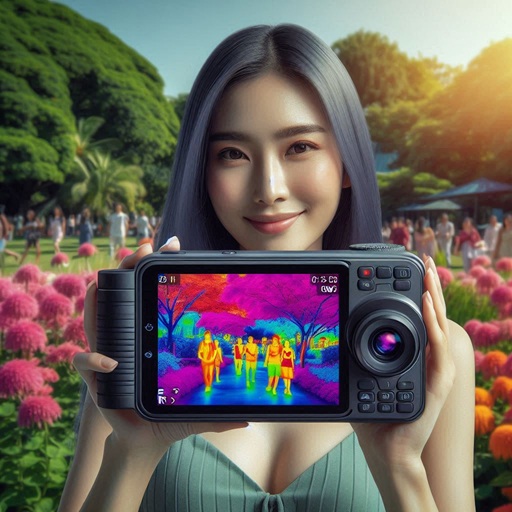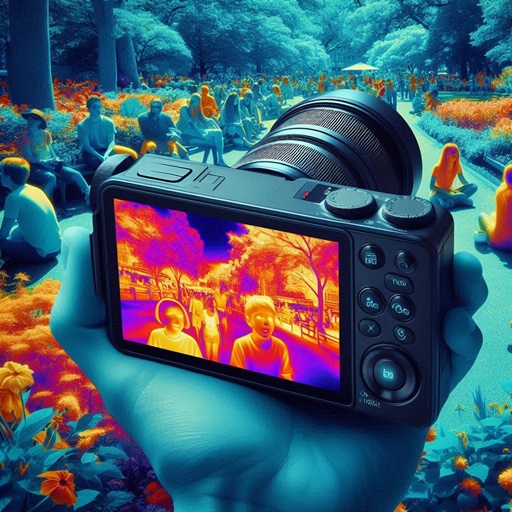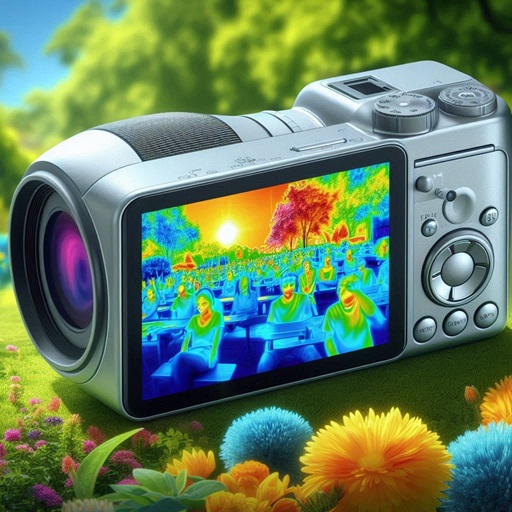The infrared camera market has witnessed significant growth in recent years, driven by advancements in technology, increasing applications across various industries, and the rising demand for thermal imaging solutions. Infrared cameras, also known as thermal imaging cameras, are devices that detect infrared radiation emitted by objects and convert it into visible images. These cameras are widely used in industries such as healthcare, automotive, aerospace, defense, and industrial manufacturing.
Overview of the Infrared Camera Market
The global infrared camera market is estimated to be worth USD 6.7 billion in 2023 and is projected to reach USD 9.6 billion by 2028, growing at a CAGR of 7.3% during the forecast period 2023-2028.
One of the key drivers of market growth is the increased adoption of infrared camera products in security and surveillance applications, fueling demand across various industries.
This growth is attributed to the increasing adoption of infrared cameras in various sectors, including surveillance, healthcare, and automotive.
Infrared cameras are essential tools for detecting heat signatures, making them invaluable in applications such as night vision, predictive maintenance, and medical diagnostics. The COVID-19 pandemic further accelerated the demand for infrared cameras, particularly for temperature screening and monitoring in public spaces.
Download PDF Brochure @ https://www.marketsandmarkets.com/pdfdownloadNew.asp?id=593
Market Segmentation
By Type
- Cooled Infrared Cameras: These cameras use cryogenically cooled detectors, offering high sensitivity and image resolution. They are commonly used in military and scientific applications.
- Uncooled Infrared Cameras: These cameras operate at ambient temperatures and are more cost-effective. They are widely used in commercial and industrial applications.
By Wavelength
- Short-Wave Infrared (SWIR): Used in applications such as semiconductor inspection and solar cell monitoring.
- Mid-Wave Infrared (MWIR): Ideal for gas detection and thermal imaging in industrial settings.
- Long-Wave Infrared (LWIR): Commonly used in surveillance, firefighting, and medical imaging.
By Application
- Military and Defense: Infrared cameras are used for surveillance, target acquisition, and night vision.
- Healthcare: Thermal imaging for fever screening and diagnostics.
- Industrial: Predictive maintenance, equipment monitoring, and quality control.
- Automotive: Advanced driver-assistance systems (ADAS) and night vision systems.
- Commercial: Security and surveillance in public spaces.
By Region
- North America: The largest market due to high defense spending and technological advancements.
- Europe: Significant growth in automotive and industrial applications.
- Asia-Pacific: Rapid industrialization and increasing adoption of infrared cameras in healthcare.
- Latin America and Middle East & Africa: Emerging markets with growing demand for surveillance and security solutions.
Key Market Trends
Increasing Adoption in Healthcare
The COVID-19 pandemic highlighted the importance of infrared cameras in healthcare. These cameras are now widely used for fever screening and monitoring in hospitals, airports, and public spaces.
Integration with AI and IoT
The integration of infrared cameras with artificial intelligence (AI) and the Internet of Things (IoT) has enhanced their capabilities. AI-powered thermal imaging systems can analyze data in real-time, improving accuracy and efficiency.
Miniaturization and Portability
Advancements in technology have led to the development of compact and portable infrared cameras. These devices are increasingly used in field applications such as firefighting and search-and-rescue operations.
Rising Demand in Automotive Sector
The automotive industry is witnessing a surge in demand for infrared cameras, particularly for ADAS and night vision systems. These cameras enhance driver safety by detecting obstacles and pedestrians in low-visibility conditions.
Growth Drivers
Technological Advancements
Continuous innovations in infrared camera technology, such as improved resolution and sensitivity, are driving market growth.
Increasing Security Concerns
The rising need for surveillance and security in public spaces and critical infrastructure is boosting the demand for infrared cameras.
Government Initiatives
Governments worldwide are investing in advanced surveillance systems, particularly in defense and public safety, contributing to market growth.
Expanding Applications
The growing use of infrared cameras in diverse industries, including healthcare, automotive, and industrial manufacturing, is fueling market expansion.
Challenges and Restraints
High Costs
The high cost of cooled infrared cameras and advanced thermal imaging systems can limit their adoption, particularly in developing regions.
Limited Awareness
A lack of awareness about the benefits of infrared cameras in certain industries can hinder market growth.
Regulatory Challenges
Stringent regulations and export controls on infrared camera technology, particularly in defense applications, can pose challenges for market players.
Competitive Landscape
The infrared camera market is highly competitive, with key players focusing on product innovation, partnerships, and mergers and acquisitions to strengthen their market position. Major companies in the market include:
- FLIR Systems (Teledyne Technologies)
- Axis Communications
- Leonardo DRS
- L3Harris Technologies
- Seek Thermal
- Xenics
Future Outlook and Opportunities
The infrared camera market is poised for significant growth in the coming years, driven by technological advancements and expanding applications. Key opportunities include:
- Emerging Markets: Increasing adoption in developing regions such as Asia-Pacific and Latin America.
- Smart Cities: Growing demand for surveillance and security solutions in smart city projects.
- Healthcare Innovations: Development of advanced thermal imaging systems for medical diagnostics.
The infrared camera market is on a robust growth trajectory, driven by technological advancements and increasing demand across various industries. As the world continues to embrace thermal imaging solutions, the market is expected to witness significant expansion in the coming years. Stakeholders and investors should focus on emerging trends and opportunities to capitalize on this growing market.
FAQs
Q1: What is an infrared camera?
An infrared camera, also known as a thermal imaging camera, detects infrared radiation emitted by objects and converts it into visible images.
Q2: What are the key applications of infrared cameras?
Infrared cameras are used in various applications, including surveillance, healthcare, automotive, industrial manufacturing, and defense.
Q3: What are the types of infrared cameras?
The two main types of infrared cameras are cooled and uncooled infrared cameras.
Q4: What is driving the growth of the infrared camera market?
Key growth drivers include technological advancements, increasing security concerns, and expanding applications across industries.
Q5: Which region dominates the infrared camera market?
North America is the largest market for infrared cameras, driven by high defense spending and technological advancements.
Q6: What are the challenges faced by the infrared camera market?
Challenges include high costs, limited awareness, and regulatory constraints.
Q7: What is the future outlook for the infrared camera market?
The market is expected to grow significantly, with opportunities in emerging markets, smart cities, and healthcare innovations.



